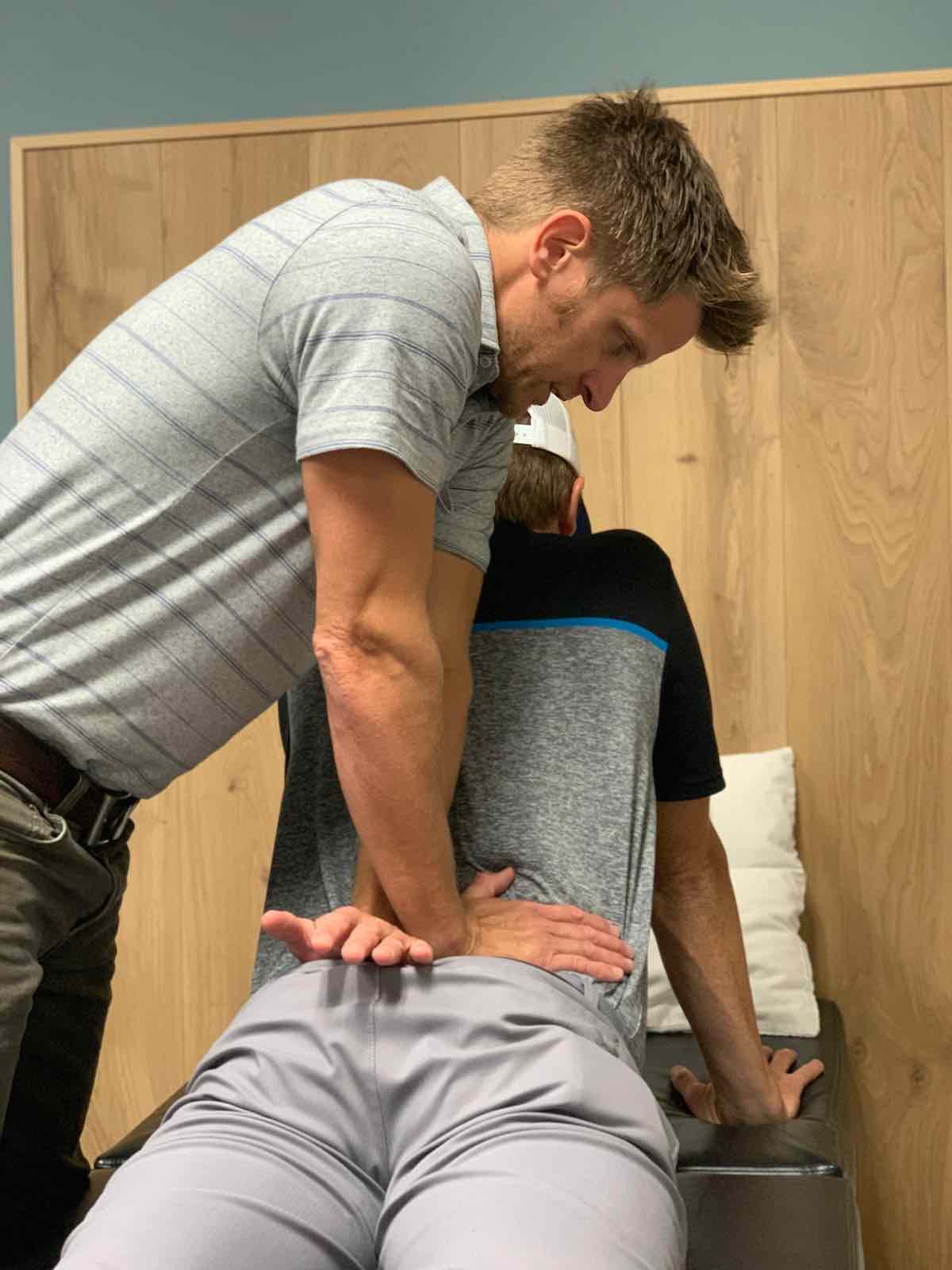
Nothing can stop you in your tracks quite like back pain. As common as it can be challenging to treat, back pain is notorious for disrupting daily life and restricting normal activity levels.
When you understand the common causes of back pain, how physical therapy can treat back pain, and in general, how long it takes to get relief from back pain with physical therapy, you’re in the best position to get lasting results.
At SIMIO, our goal is to help you understand how physical therapy can help reduce back pain and establish a foundation for a healthy back for years to come. The journey to a healthier, pain-free back starts with customized, comprehensive physical therapy for back pain.
Common Causes of Chronic Back Pain
Whether you’ve suffered an injury or just woke up one day with a sore back, there are a few frequent causes that create and perpetuate chronic back pain. The most common cause of chronic back pain is often an imbalance of core and back muscles, however there are also many underlying issues and events that impact back health:
- Posture and Body Mechanics: Proper posture and the restoration of that posture can help relieve back pain, sometimes immediately. Working with a qualified Postural Restoration physical therapist can help you find a healthier alignment that supports your unique back pain.
- Injuries and Accidents: Whether it’s a sports injury, car accident, or a simple trip and fall, backs often bear the brunt of bodily injuries. These types of accidents can also create patterns of unhealthy movement that compensate for the sore or weakened back, creating even more mobility and flexibility problems.
- Overuse or Repetitive Motion: When we reinforce unhealthy or dysfunctional movement patterns day in and day out, we create hard-to-break patterns of movement. This in turn creates additional pain and discomfort, often while limiting mobility and flexibility.
At SIMIO, we work with you to identify the root causes of your back pain. This holistic approach evaluates movement patterns, biomechanics, flexibility, and more to set the stage for successful low back pain treatment.
How Physical Therapy Can Treat Back Pain
Physical therapy uses different types of exercises, therapeutic interventions like heat or massage, as well as active and passive joint mobilizations to strengthen the musculoskeletal system, increase flexibility, and improve posture to alleviate both chronic and acute back pain. Joint mobilizations are often done on the lumbar, cervical, and thoracic spine to facilitate mobility and flexibility, and these are done in tandem with therapist-supervised exercises and stretches like:
- Core strengthening exercises and stability work like high and low plank variations, crunches or bird dogs/dead bugs, cat cow poses, bridge lifts, and pelvic tilts.
- Hip and leg exercises to stabilize and support the lumbar spine like squats, lunges, single-leg deadlifts, and side stepping with resistance bands.
- Postural Restoration Physical Therapy techniques focus on correcting natural postural imbalances and asymmetries in the body that can contribute to back pain. Restoring your ability to maintain an optimal breathing posture as you walk and perform other daily activities will not only reduce compression and muscular tension in your back and neck, but will restore mobility and muscular strength throughout the rest of the body, helping you maintain your improvements long after your treatment is over. Muscle-energy techniques, myofascial release, and other manual therapy interventions can be used in tandem with the Postural Restoration approach to improve and enhance entrenched or compensatory movement patterns.
- Cardio and aerobic activity like stationary bicycling, brisk walking, or elliptical training can provide low-impact ways to support healing and strengthening of spinal muscles.
Our physical therapists can also coach patients on proper techniques for everyday activities like sitting, standing, and lifting, so the transition from the clinic to everyday life is a seamless one.
How effective is physical therapy for back pain?
Studies that look at patients with back pain who are referred to physical therapy versus traditional care demonstrate a 45% increase in patient-reported treatment success after one year. And while these results vary greatly between specific back injuries and types and duration of physical therapy received, the data consistently demonstrates that patients who receive at least some physical therapy for back pain experience better outcomes, and for longer periods of time, than those who do not.
It’s also important to consider that the right treatment plan for your back, the right attitude, and the right expectations can go a long way to determining how effective physical therapy can be for back pain. For example, if you expect to walk away from your first session pain-free, you may want to discuss those expectations with your therapist, so they can provide insight into how or why that may or may not be possible based on your individual assessment. Willingness to put in the work, both in the clinic and at home, also goes a long way in supporting effective physical therapy for back pain.
How long does physical therapy take for back pain?
How long it takes to heal back pain with physical therapy is generally dependent on the type and severity of the injury. It’s common for back pain patients to be recommended to a minimum of 8 weeks of physical therapy, with either one or two sessions per week, though again this pacing will vary based on the patient’s ability and specific circumstances.
A customized patient plan is created upon the initial evaluation to determine what treatment course makes the most sense, and as treatment progresses, is evaluated based on the patient’s progress and tolerance.
How SIMIO Physical Therapy Can Help
If you’re suffering from chronic back pain, and have tried exercises or stretches without much success, it’s always a good idea to make an appointment with a physical therapist. In Michigan, you can self-refer to SIMIO and receive up to 10 visits without seeing a primary care provider first. While you also may want to see your primary care physician, the sooner you can see a physical therapist, the sooner you can get started on the path to healing.
Have more questions? Ready to make an appointment?
Reach out via phone at 616-741-9555, or fill out our online contact form and we’ll get back to you as soon as possible.

Nate Dykema
PT, DPT, Cert MDT
Nate Dykema is a 2011 graduate of Grand Valley State University’s Doctorate Physical Therapy program. Nate is a certified provider of the McKenzie Method of Mechanical Diagnosis and Therapy, and is actively engaged in PRI coursework and the study of patterned human asymmetry.

Wesley Barger
PT, DPT
Wes Barger is a 2017 graduate of Grand Valley State University’s Doctorate Physical Therapy program. Wes has additional training in physical therapy for individuals with neurological conditions, and is actively engaged in PRI coursework and the study of patterned human asymmetry.
Let’s discuss your goals during a free consultation
Correcting poor alignment, postural awareness, or improving your ability to move starts with discovering what is limiting your body’s ability. We’ll examine your whole body for imbalanced relationships that lead to undesired tension, restriction or altered movement. Then we’ll create a roadmap to help you overcome your limits and build an awareness that leads to lasting results.
Arrange a meeting with a licensed physical therapist in Zeeland, MI today.